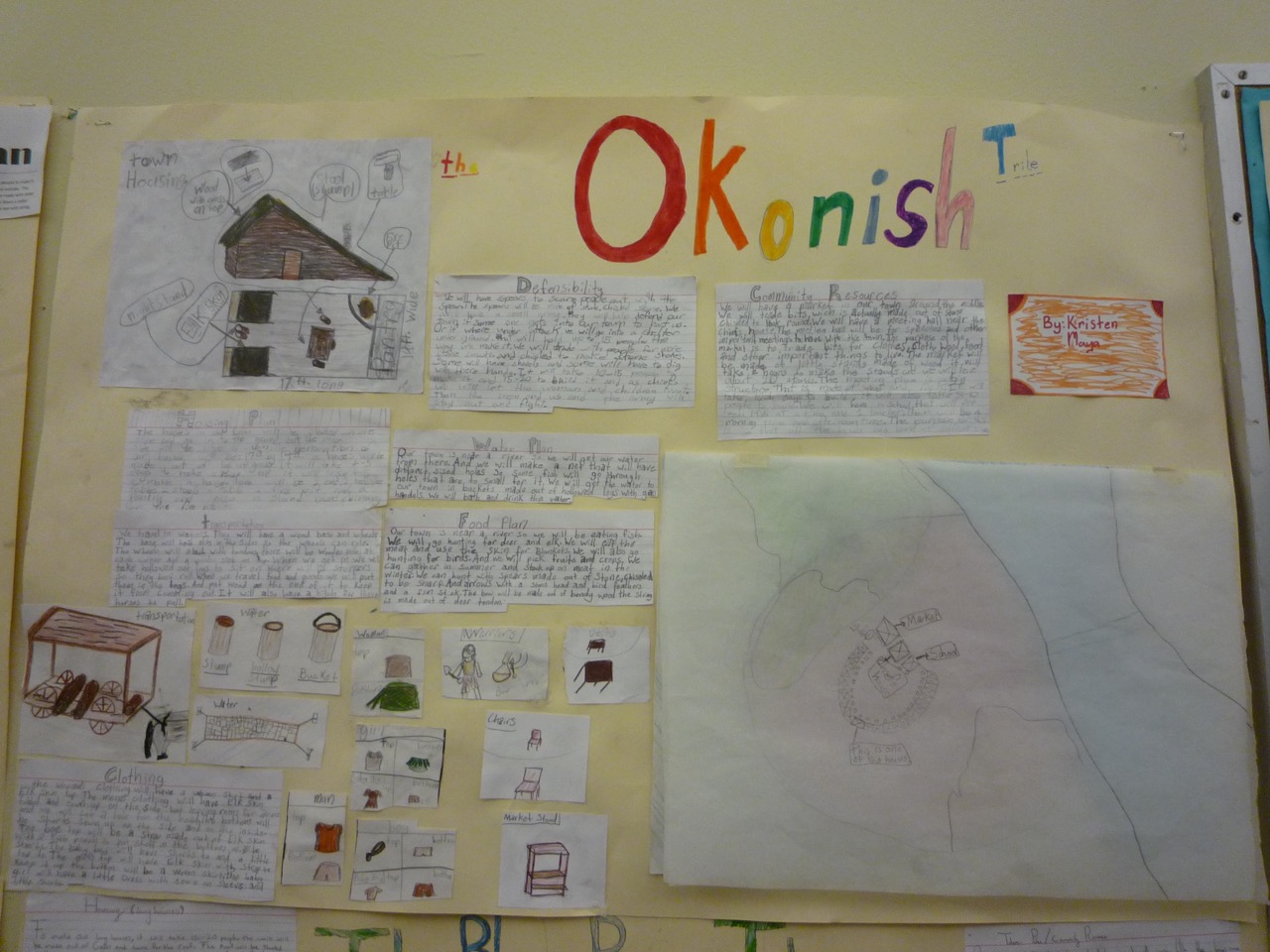- About Us
- Events & Training
- Professional Development
- Sponsorship
- Get Involved
- Resources
|
Salmon Bay Elementary 4th Grade Town Planning Project  By Darryl Eastin
Fourth graders imagined they were part of a group of settlers searching for locations within Washington State to build a small town. They would be the first immigrants to settle in the Washington territory other than Native Americans already living in the area. Students learned about the five geographic areas of Washington State (Puget Sound Lowlands, Cascade Range, Columbia Plateau, Coastal Range, and Rocky Mountain) including their climate, natural resources, and land forms. They also learned about the resources needed to support their settlement including local wildlife habitat, water sources, food supply and materials to construct houses and other buildings. Students also studied the early settlement history of Seattle, Jamestown, and the ancient Greek city of Antioch. To evaluate different locations, students learned about the environmentally based planning process developed by Scottish town planner Ian McHarg, known as suitability analysis that, identifies natural features of a region such as steep slopes, flood plains, rivers, forests, flat lands, and soils and uses those features to determine areas best suited for development. McHarg used a multiple layer overlay technique to identify preferred development areas. Each team presented their town plan and design to the other teams and students judged if there would be sufficient food, water, and needed resources to support the town, and if it seemed reasonable that the town would survive and prosper in the future. Supporting materials include: Drawings of the Greek city of Antioch, Washington State Terrain Map published by the Kroll Map Company. For more information contact: Darryl Eastin, AICP at [email protected] Image: Example of 4th grader's town plan and design project board, photo by Darryl Eastin Related Content: Planners, Teachers, Environmental planning, Social Studies, English Language Arts |

